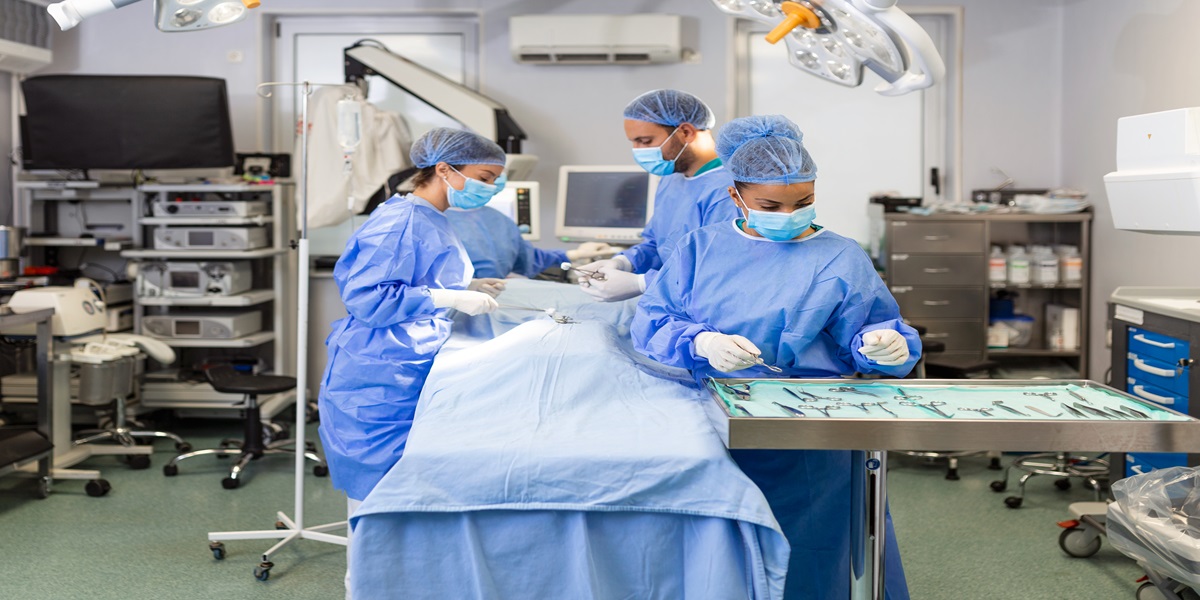
How do You Choose Operating Tables For Your Hospital?
An operating table can be defined as a table that is designed to be used within a surgical or clinical setting for different purposes. This table provides a robust platform that is adjustable to improve surgical outcomes. There are different features of this table, like increased adjustability, improved stability, incorporated imaging facilities, increased padding for comfort, and easy sterilization. The international market for operating tables will be worth millions of dollars in 2024. As of today, it is easily one of the most essential parts of surgical settings and an essential component of highly productive clinical outcomes. With the biomedical and medical devices sector tremendously increasing to meet global demands, companies have started designing multiple options for procedure tables for different hospital needs.
Uses of the Examination Table
The use depends on the different specifications of the product and its usage. The table plays a key role in increasing the comfort of the patient. Medical professionals can use this table to access a variety of parts of the patient’s body and can finish their operations with more comfort. Clinical professionals, like pediatricians and gynecologists, perform surgeries with the help of these tables. Thus, the operating room tables can have different specifications according to their usage.
Characteristics of Medical Tables
Tables can include stationary tables as well as mobile tables. Mobile ones are more beneficial for different clinical facilities where the mode of treatment includes the transportation of the patient, like a variety of radiological procedures. Stationary ones are immobile tools; they provide different accessories for the medical tables. The most vital parts of the medical tables include the column of the table, the top of the table, and the transporter of the table. Most clinical tables have a mean height of 15–30 inches and usually come with adjustable height features.
Categorization of Clinical Tables
The comfort of the patient is an essential component of any medical facility. Choosing a specific table that is a vital component for the specific surgery is vital to selecting the specific model or any specific design. The most common types of theater tables used in healthcare settings include:
Surgical Tables
These are versatile OT tables used in multiple ways and procedures. Operational tables provide a rigid surface for clinical operations. They are produced on the market with height management alterations like Trendelenburg, lateral tilt, and slide as per the specifications of the model. There are a variety of considerations to be followed while dealing with these specialized tables: Increased accessibility of the tables: They play a key role in accessing the surgical site with ease. The angle of the table, the height of the table, and the mobility adjustment of the table are vital to the surgical outcomes by giving a high degree of access to surgical sites. Improved Stability of the Tables: The patient should be fixed, as any unrequired movements can affect the medical treatment negatively. This is a critical procedure. Radiological support of the table: If the healthcare facility uses radiological facilities like laparoscopy, these tables would be appropriate for these medical facilities. Increased patient support of the table: The table used in the medical procedure should accommodate different patients, like obese patients. The healthcare facilities should look for tables that can accommodate around 350 pounds, which could include patients of all sizes.
Orthopedic Tables
Orthopedic ailments are increasing day by day, like osteoporosis, fractures, and dislocations. As such, there has been a clinical demand for these procedure tables, which are much more efficient than general tables. The advantages of this table include increased comfort for the patient for surgical operations such as myelograms and knee replacements. Comfortable positioning for specialized procedures like spinal column surgeries. Advanced access to radiological procedures.
Medical Imaging Tables
Radiological procedures are a necessity for modern surgeries, so modern hospitals should be equipped with these imaging tables. These imaging tables are incorporated with the following features: Advanced 3D imaging facilities and advanced fluoroscopy facilities. Highly specialized facilities for procedures such as catheter tray extension.
Benefits of Quality Operating Tables for Hospitals
There are numerous benefits to quality tables, like ophthalmic OT tables. Quality treatment tables are durable and long-lasting. Using increased quality tables reduces repairman expenses, thereby increasing the savings of the hospital on the maintenance of these hospitals. Quality hospital tables such as hydraulic OT tables are not as expensive as perceived but are at an affordable price with state-of-the-art specifications and features, thereby improving the patient experience. Reducing the risks associated with these tables is essential, plus the hospital purchase team should take into account the reliability and versatility of these tables.
Selecting the Right Table for Hospital Needs
While choosing these procedure beds, hospital administration needs to consider things like budget, application, demographics of patients, and other vital considerations. Hospitals should prefer experienced, reputed, and reliable suppliers for this important work of equipment acquisition. There are vital factors that should be considered when selecting the right supplier for the hospital: The supplier should have a substantial amount of experience, including industrial and technical experience. The supplier should have a different range of products for each categorization, and the hospital should choose as per their requirements. The supplier should have products at an affordable price. The supplier should be able to provide exceptional customer service for the products post-purchase so that patient care should not suffer.
Conclusion
The hospital equipment acquisition departments should involve medical staff while selecting equipment, like patient tables, that meets the requirements of the clinical team and procedures. Also, the medical device supplier should be registered with the medical device regulatory authorities in the region and should comply with their guidelines effectively.
Leave a Comment
© Copyright © 2024 gwsmed.com | GWS Surgicals LLP. All rights reserved.
| |




Comment (0)
No Comments Yet. Be the first one.